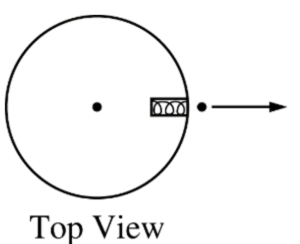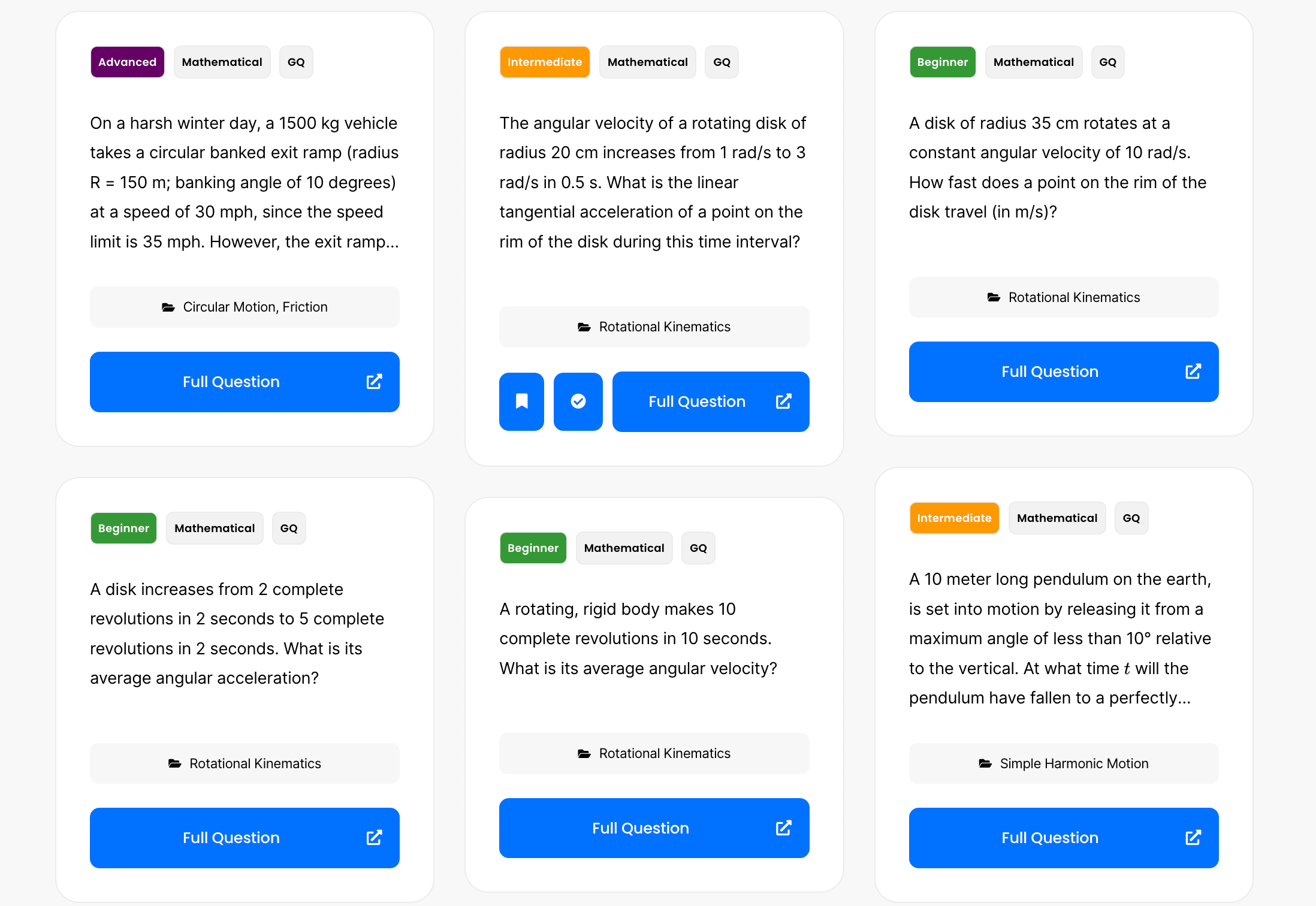A rubber ball bounces on the ground. After each bounce, the ball reaches one-half the height of the bounce before it. If the time the ball was in the air between the first and second bounce was 1 second. What would be the time between the second and third bounce?
A golf ball is hit with a golf club. While the ball flies through the air, which forces act on the ball? Neglect air resistance.
Two masses, \( m_1 \) and \( m_2 \), are suspended on either side of a pulley with a radius \( R \), as shown. The heavier mass, \( m_2 \), is initially held at rest above the ground by a distance \( h \) before being released. An student measures that it takes an amount of time \( t \) for the heavier mass to hit the ground after being released.
A marble is thrown horizontally with a speed of \(15 \, \text{m/s}\) from the top of a building. When it strikes the ground, the marble has a velocity that makes an angle of \(65^\circ\) with the horizontal. From what height above the ground was the marble thrown?
A man with mass \( m \) is standing on a rotating platform in a science museum. The platform can be approximated as a uniform disk of radius \( R \) that rotates without friction at a constant angular velocity \( \omega \).
Two students are discussing what the man should do if he wishes to change the angular velocity of the platform.
Student A says that the man should run towards the center of the platform, because this will decrease the moment of inertia of the man-platform system. Since \( L \propto I \), the angular momentum will decrease proportionately and the platform will slow down.
Student B says that since the platform is rotating counterclockwise, the man should run in a clockwise direction to slow the platform down. His feet will exert a frictional torque on the platform, which will cause an angular acceleration of the man-platform system.
Explain what is correct and incorrect about each students statement if anything.
The magnitude of the gravitational field on the surface of a new planet is \(20 \, \text{N/kg}\). The planet’s mass is half the mass of Earth. The radius of Earth is \(6400 \, \text{km}\). What is the radius of the new planet?
Ben’s favorite ride at the Barrel-O-Fun Amusement Park is the Flying Umbrella, which is lifted by a hydraulic jack. The operator activates the ride by applying a force of \( 72 \) \( \text{N} \) to a \( 3.0 \) \( \text{cm} \) wide cylindrical piston, which holds the \( 20,000 \) \( \text{N} \) ride off the ground. What is the diameter of the piston that holds the ride?
A block with mass m slides at speed [katex] v_0 [/katex] on a smooth surface and hits a stationary block with mass [katex] M [/katex] . They stick together and move at speed [katex] v_0/3 [/katex]. Find [katex] M [/katex] in terms of [katex] m [/katex] .

A simple pendulum consists of a bob of mass 1.8 kg attached to a string of length 2.3 m. The pendulum is held at an angle of 30° from the vertical by a light horizontal string attached to a wall, as shown above.
A car accelerates uniformly from rest to [katex] 29.4 [/katex] m/s in [katex] 6.93 [/katex] s along a level stretch of road. Ignoring friction, determine the average power in both watts and horsepower ([katex] 1 \text{ horsepower} = 745.7 \text{ Watts} [/katex]) required to accelerate the car if:

A compressed spring mounted on a disk can project a small ball. When the disk is not rotating, as shown in the top view above, the ball moves radially outward. The disk then rotates in a counterclockwise direction as seen from above, and the ball is projected outward at the instant the disk is in the position shown above. Which of the following best shows the subsequent path of the ball relative to the ground?
A car is heading rightward but accelerating to the left. This means the car is:
By continuing you (1) agree to our Terms of Use and Terms of Sale and (2) consent to sharing your IP and browser information used by this site’s security protocols as outlined in our Privacy Policy.
Quick Start Guide
AP physics 1, AP C, honors and advanced physics students.
Quickly filter questions by units and more.


Here’s guide to using 5 UBQ filters.
GQ = general question, MCQ = multiple choice, FRQ = free response.


Click the check or bookmark button.
Now you’ll be able to see completed or bookmarked questions at a glance!
Answer keys, personalized for you.

Phy will be responsible for grading your FRQs and GQs.
No more copy and pasting. Just solve and snap.
Questions for Mastery

By continuing you agree to nerd-notes.com Terms of Service, Privacy Policy, and our usage of user data.